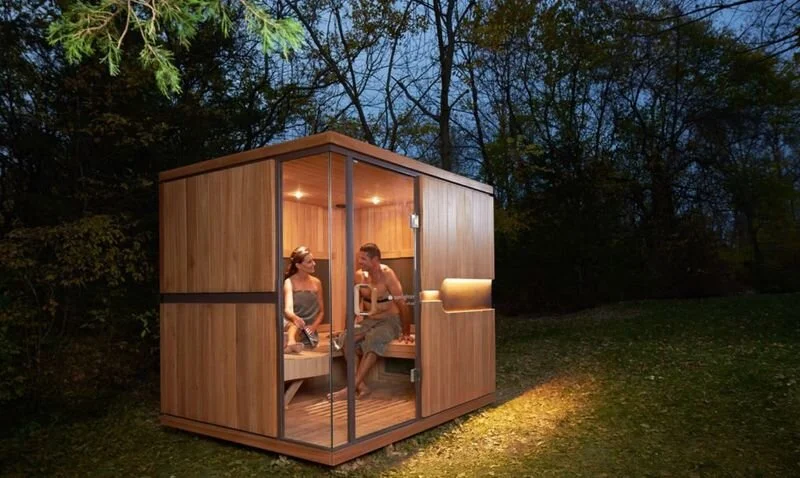History of Sauna Cultures Around the World
Heat Therapy
Commonplace amongst both Western and Eastern medicine practitioners, heat therapy is a major component of the sauna experience. Despite totally different perspectives of the human body, experts from all around the globe recognize the unique and powerful ability of heat treatments. High temperatures signal your body to increase blood flow, speeding the healing process. Saunas, sentos, banyas and hammas all utilize heat therapy in different cultures around the world.
Saunas and hot baths have long played an important role in the total health and socialization of many cultures. It is only more recently that individuals are able to access to these same benefits at home. Companies like Sunlighten offer affordable, luxury saunas at a very reasonable price. You can save an extra $600 on your cabin and $250 on your solo when you mention FaceTheCurrent. Equipped with modern infrared technology, today’s saunas offer a whole new level to the sauna experience.
Sauna Cultures
While the Finnish sauna experience may be the most similar to that of most western sauna experiences, the practice and use of saunas is common globally. Knowledge of heat treatments and their many benefits has long existed in cultures worldwide. Some of the many forms of heat treatment regularly utilized include saunas, steam rooms, steam baths, and hot rocks or towels. For example, hot rocks or towels are great if you want to pinpoint an injury and apply more of your body’s healing focus to that region. The warmth will soothe and relax your muscles, and help to relieve any tightness or tension that is present.
Different countries have different standards or traditions built around the sauna experience. Japan, Russia, Finland, Iceland and Turkey each each possess their own unique behaviors regarding the use of saunas and heat treatment in their cultures. Lets take a closer look!
Japanese Onsen & Sento
Usually called onsen or sento, hot baths are extremely common in Japan. Baths serve multiple purposes including healing, cleansing and socializing. Onsen use natural hot springs to create bathing houses. Sento, scattered throughout the streets of Japan, are public bathing houses that do not use spring water. The tradition of public bathing goes all the way back to the Heian Dynasty (794-1185). Although the tradition is old, modern sentos offer state of the art healing practices including electrical pulse baths.
Russian Banya
The Russian banya has been an integral part of the culture for centuries. A traditional banya is a Russian sauna or steam room, although some more closely resemble a bath house. Sauna rocks on a wood stove heat the room. In Russia they used soft tree branches, or venik, to clean the body during the sauna experience. Often there is an individual working the banya who will assist in the practice.
Finnish Sauna
The sauna culture in Finland is by far the most popular sauna culture in the world. Heat therapy is a crucial element of daily living there. Finnish saunas have been around for thousands of years, very much resembling the modern, contemporary sauna. Made of wood, they use a stove known as a kiuas to heat the space. Saunas are perfect for those seeking an escape from cold temperatures. The cold environment completely explains why saunas are such a big part of the culture in Finland.
Icelandic Sauna
Iceland has a strong outdoor culture including the heat therapy provided by natural pools. Volcanic activity in the region naturally heats mineral rich water pools across Iceland. Natural hot springs are common among tourists and locals, especially the world-famous Blue Lagoon. Iceland saunas and spas are somewhat rare in North America. They often tend to mimic natural settings of Iceland and serve as a tribute to home.
Turkish Hammam
A Turkish hammam, also referred to as a Turkish bath, is Middle Eastern tradition. Considered a form of public bathing, cleansing, and relaxation, hammams have been around since the 15th century Ottomon Empire. The Roman style of public bathing merged with the Islamic style, and resulted in the hammam. Traditionally, a Turkish hammam begins with a room to warm the body, contains another room to wash and cleanse the body, and a third to cool off with a lower temperature.
Special Offer!
We have partnered with some of our favorite brands, Sunlighten Saunas & FaceTheCurrent, in order to provide the holistic healing benefits of saunas to our readers. By following this link and mentioning: FaceTheCurrent you will save $600 on your cabin and $250 on your solo. The scientific evidence and research supporting the use of saunas is incredible, and the historical and cultural relevance only expands the depth of the experience. With your own sauna you will be able to try out different cultural practices from all over the world, without ever leaving the comfort of your own home! As always, our team here at FIHC is wishing you and your families the best of health. We look forward to assisting you however possible!
More Info:
Mention: FaceTheCurrent to save $600 on your cabin and $250 on your solo. with Sunlighten Saunas
Check out FaceTheCurrent’s Partner Offers to support and benefit from some of our favorite brands!
Sunlighten Saunas: Merging Tradition with Modern Science for Full-Body Wellness & Healing
*This article was originally published HERE







